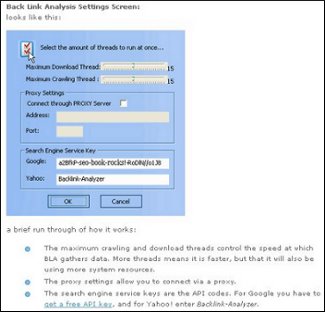How to Learn from your Competitors

If you’re looking to work your way up the search engine rankings, and who isn’t? Then one way to get some good insights into what works and what doesn’t is to see what your competitors are up to. What does that top ranking site have that your site doesn’t? It is surprisingly easy to find out these things, or some of them at least. One of the great things about the web is that finding who your competitors are is easy, as is comparing services and products. It’s a given that customers usually return to sites that are easy to browse and that have generous amounts of information, even if the visitors don’t partake of all of it.
Analyze The Top Sites in Your Niche
Once you find out what the top ranking sites in your niche are, what should you do? Well, here are several things you can do.
You can find out some very interesting facts. For example, you might discover that a lot of the inbound links come from websites that the competitor owns. This isn’t always easy to find out, but it’s very informative if you can. The “whois” information may not give you much to go on, but if you do discover that this is the case, you may realize that owning some legitimate websites on the side can help attract more traffic to your site.
You might discover when browsing through your competitor’s site that even though the information on your site is similar, their site has a very different structure – a better optimized structure. It could make a big difference in their search engine ranking. You might discover that your competitor is using a bunch of keywords and key phrases that you never even thought of.
Start off simply enough. Get a pad of paper and a pen and make notes as you thoroughly do your own “crawl” of your competitor’s site. Look over the pages as they appear first, then go back and look at the source html. On most browsers you get this by pressing ctrl+U. If not, this command can often be found in the “Tools” menu of your browser. Don’t worry. You don’t have to be an html genius to learn from it.
Look at their title tag. Is it well written? Does it reflect a common syntax used throughout the site? On the home page, look for the H1, H2, and H3 tags. If you find them, your competitor uses heading tags within the page. Try to identify the actual text used in the headings. You will more than likely find some paydirt key phrases within these tags.
Look for nofollow tags. These are used to spread PageRank throughout the site. Doing this is what’s known as having a themed structure, and it can be very beneficial to your ranking. If you find this pattern, they either know their SEO or they’ve hired someone who does.
How do they do their navigation? Is it in a drop-down menu? Is it search engine friendly? In the footer is there a text menu?
Look at the anchor text: is there a pattern of keywords there? If certain words appear there often, they are almost certainly target phrases.
Check the Google PageRank of the pages you visit. If a page has a notably high PR, pay closer attention to that page. These are often pages that have the information that visitors choose to link to. It could give you some clues for adding similar content to your website.
Backlinks and PR
 Here’s another cool thing you can do with your competitor’s website: back link analysis. SEO Book offers a free back link analyzer that you can download here. You enter simple information as you can see in the screen shot. When you run the program, set it up to acquire Google Rank and Alexa Rank for each back link. This is a matter of checking two boxes. The back link analyzer automatically filters out “rel=nofollow” links.
Here’s another cool thing you can do with your competitor’s website: back link analysis. SEO Book offers a free back link analyzer that you can download here. You enter simple information as you can see in the screen shot. When you run the program, set it up to acquire Google Rank and Alexa Rank for each back link. This is a matter of checking two boxes. The back link analyzer automatically filters out “rel=nofollow” links.
When you’re done, you can sort your results by PageRank and Alexa Rank. The reason for looking at both Alexa and PageRank is that each has its advantages and disadvantages. PageRank may be quirky due to whatever they’re penalizing recently, so you could miss out on a quality site because of its low PR. Alexa Rank is a measure of popularity, but doesn’t say anything about how Google views its quality. So use both as a system of checks and balances.
If you really want to delve into things, put your report data from the Back link analyzer into a spreadsheet. Make a copy where you sort the data by Google PR from highest to lowest. Then get rid of the ones that rank less than 4. Have another copy where you sort by Alexa Ranking from lowest to highest, and then do another sort by Google PR from highest to lowest. Get rid of the ones that have a negative Alexa Ranking. Congratulations: you now have lists of authority pages that link to your competitor.
So now that you have that data, what do you do with it? If you filter the links by domain, you can see how many links per domain the competitor is getting. If one website is repeated a lot, then you can bet that the competitor owns the website (or has bought a link from them). You can try running a “whois” on the domain, but you may not get a satisfactory answer.
Here’s another thing: if you see that a lot of the links are from the competitor’s own website, then chances are they have good content. If so, take note. You may need to focus on increasing your content or the quality of it.
Next you should figure out which of those links you’d like to get yourself. You can probably get several just by asking. It certainly can’t hurt (unless you accidentally ask for back links from sites that happen to be owned by the competitor, and even then, you might get a link).
In the midst of all this competitor sleuthing, don’t forget about your site. You’re doing this to learn, so be ready to apply some of what you find out to your own site, and hopefully you’ll get a boost in the rankings as well.







